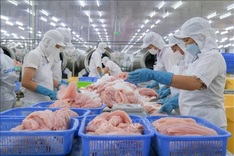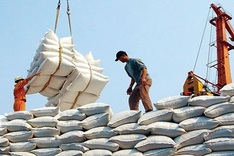
Coconut exports contribute significantly to the recovery.
Exports recover on strong durian and processed fruit demand
Preliminary data show July exports reached USD 731.4 million, up 32.9 per cent year-on-year despite a 9.4 per cent dip from June. From January to July, total exports stood at USD 3.83 billion, narrowing the year-on-year decline to just 2.2 per cent, a significant improvement from the nearly 30 per cent drop earlier this year.
According to Dang Phuc Nguyen, General Secretary of the Vietnam Fruit and Vegetable Association (VinaFruit), the rebound was led by strong durian performance, the main export driver in 2023.
Coconut, mango, passion fruit show robust growth
Coconut, processed mango and passion fruit also contributed significantly to the recovery. The export price of Vietnamese coconut jumped from USD 1.21 per kg in 2022 to USD 7.26 per kg in 2025, driven by global demand in food, cosmetics and biofuel sectors.
Following China, the US began importing fresh Vietnamese coconuts in 2023, with growing interest from Middle Eastern markets.
The US was Vietnam’s fastest-growing market in the first half of 2025, with export turnover up 166 per cent year-on-year, rising to 8.42 per cent of total exports, from 5 per cent in 2024. China remained the largest market with 52.62 per cent, down from 65 per cent the previous year.
Exports to Japan, Taiwan (China) and the Netherlands rose between 10 and 70 per cent, while exports to China and Thailand dropped 24 and 29 per cent, respectively, amid rising technical barriers.
Market access, processing expansion to drive future growth
At the National Fruit and Vegetable Export Conference on July 18 in Ho Chi Minh City, industry leaders identified bananas and passion fruit as future growth engines. Vietnamese bananas are now sold in Japan, South Korea, the EU, the US and China.
Vietnam is also negotiating official passion fruit access to the US and finalising technical documentation for South Korea and Thailand.
VinaFruit expects stronger growth in late 2025, driven by improvements in production practices, accelerated issuance of planting area codes and packaging facility certifications, and bilateral cooperation to ease technical barriers, especially with China.
Processed products are gaining share in high-value markets like the US, EU, Japan, South Korea and Australia, helping extend shelf life and reduce risks associated with fresh exports.
Outlook remains strong ahead of year-end peak season
Imports also rose, reaching USD 234.6 million in July, up 9.3 per cent month-on-month and 14.1 per cent year-on-year. Total imports from January to July hit USD 1.43 billion, up 16.9 per cent.
Although durian exports slowed in the first half of 2025, demand is expected to surge ahead of the Lunar New Year, particularly from China. Nguyen noted that Chinese consumers are increasingly favouring processed fruit products for convenience and added value.
The Ministry of Agriculture and Environment has instructed agencies to prioritise durian market access by removing phytosanitary barriers and accelerating the issuance of growing area codes.
With strong 2024 momentum (USD 7.12 billion) and improving global market access, experts believe Vietnam’s fruit and vegetable sector is on track to hit its USD 8 billion export target in 2025, provided growth is sustained and diversification continues.




















